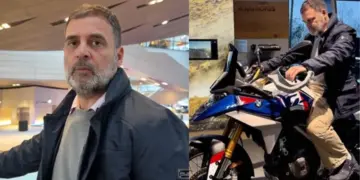By: Dr. Prankul Singhal
Scoliosis is a spinal deformity that affects millions of people, particularly during their adolescent years. It’s characterized by an abnormal sideways curvature of the spine, and in many cases, the cause remains unknown. This condition typically becomes noticeable during the teenage years when the spine’s development is in full swing. To be classified as scoliosis, the curvature must measure more than 10 degrees. When left untreated, severe spinal curves can affect lung function due to reduced chest space.
One common form of scoliosis is Adolescent Idiopathic Scoliosis (AIS). This is a 3D spinal deformity with a Cobb angle of at least 10 degrees, predominantly affecting children between the ages of 10 and 16, with a higher prevalence among females. While the exact cause of AIS is still a mystery, it’s believed to be linked to various factors, including genetics, neuromuscular abnormalities, metabolic issues, and anthropometric factors.
AIS typically makes its appearance during the adolescent growth spurt, a time of rapid growth and development. Most often, the abnormal spinal curvature remains stable, but in some cases, it progresses, becoming more severe over time. Interestingly, severe and progressive curves occur more frequently in girls than boys. However, mild scoliosis, which is equally common in both genders, usually doesn’t cause pain, movement difficulties, or breathing problems. Diagnosis is often made during a routine physical examination or scoliosis screening at school. Some common signs of scoliosis include shoulder, hip, or waist asymmetry, or having one leg that appears longer than the other. While most affected children have mild curvature, a small percentage develops more pronounced spinal deformities.
Scoliosis can manifest in different forms, often accompanying other conditions. Nevertheless, AIS typically presents as an isolated condition, primarily affecting the spine.
For treatment, the approach varies based on the severity of the condition:
Observation: In cases where the curve is very mild (10-25 degrees), patients are typically monitored with regular X-rays to track its progression. This observation usually occurs at 3, 6, or 12-month intervals.
Bracing: For individuals with curves ranging from 25 to 35 degrees, especially in growing children, bracing is a common treatment option. Bracing is intended to halt the progression of the curve by providing external support to the spine.
Spinal Fusion Surgery: Severe curves measuring over 35 degrees in skeletally immature individuals often necessitate surgical intervention. The primary surgical treatment for scoliosis is spinal fusion. Historically, this could involve anterior, posterior, or combined approaches, but the current leading technique involves posterior fusion with pedicle screws and bilateral rod placement. The surgical plan considers various factors, including the location of the deformity, regional kyphosis, shoulder height, L4 tilt, lumbar alignment, and the relationship between different curve angles and vertebral rotation.
While the exact causes of scoliosis are often unknown, it can be categorized into several types:
Idiopathic: This is the most common form where the cause remains a mystery.
Known Cause: Scoliosis can also result from clear causes and can be further divided into non-structural and structural categories. Non-structural scoliosis doesn’t significantly hinder spinal function and can result from factors like leg length discrepancies. Structural scoliosis, on the other hand, is caused by conditions such as birth defects, infections, cerebral palsy, or muscular dystrophy, making the spinal curve rigid and challenging to treat.
Congenital: This type of scoliosis is present from birth and is often due to incomplete vertebral development.
Neuromuscular: Conditions like poliomyelitis, spinal muscular atrophy, and cerebral palsy can lead to neuromuscular scoliosis, primarily caused by muscle weakness supporting the back.
Degenerative: Common in elderly individuals, degenerative scoliosis is linked to age-related changes in the spine, including reduced bone density and wear and tear on spinal discs and joints.
In addition to the varied causes and types of scoliosis, treatment options are tailored to the specific needs of each patient. With early detection and a personalized approach to care, individuals with scoliosis can lead healthy and fulfilling lives. If you or a loved one suspect scoliosis, it’s essential to seek the guidance of a healthcare professional for an accurate diagnosis and a comprehensive treatment plan that may include observation, bracing, or surgical intervention to address this condition and ensure a straighter, healthier spine.
The writer is a Senior Consultant and Head of the Spine and Scoliosis Program, Yatharth Super Specialty Hospital, Noida







